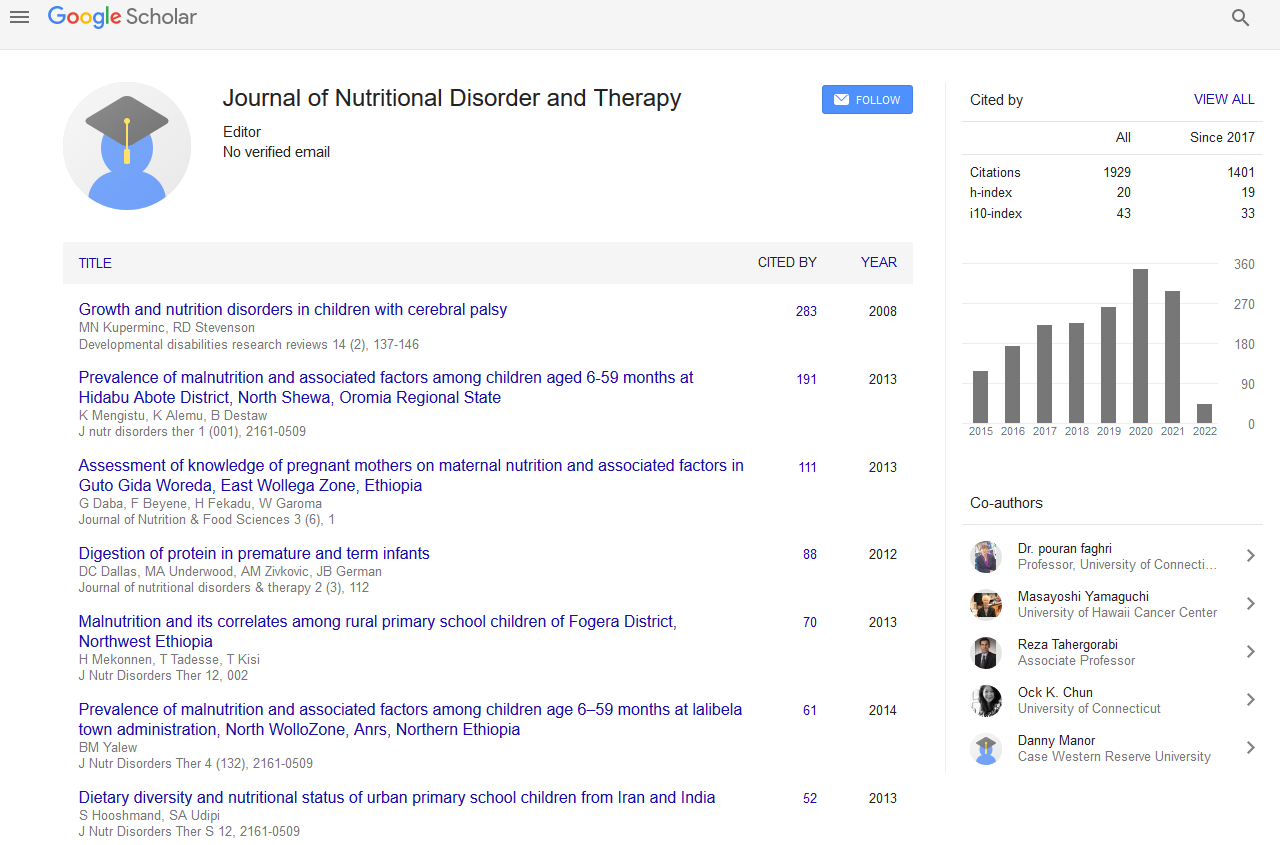Indexed In
- Open J Gate
- Genamics JournalSeek
- Academic Keys
- JournalTOCs
- Ulrich's Periodicals Directory
- RefSeek
- Hamdard University
- EBSCO A-Z
- OCLC- WorldCat
- Publons
- Geneva Foundation for Medical Education and Research
- Euro Pub
Useful Links
Share This Page
Journal Flyer

Open Access Journals
- Agri and Aquaculture
- Biochemistry
- Bioinformatics & Systems Biology
- Business & Management
- Chemistry
- Clinical Sciences
- Engineering
- Food & Nutrition
- General Science
- Genetics & Molecular Biology
- Immunology & Microbiology
- Medical Sciences
- Neuroscience & Psychology
- Nursing & Health Care
- Pharmaceutical Sciences
Abstract
Research of Iodine Nutrition Levels in Akto County, Xinjiang, China from 2009 to 2014
Wang Cheng, Wen Juan, Wang Zhong, Meng Wei-Wei, Xia Rong-Xiang and Guzanur Bahetyyar
Objective: To understand the effect of prevention and control of iodine deficiency disorders with iodized salt in Akto County, Xinjiang, China, to provide a scientific basis for formulating effective method of prevention. Methods: Sampling survey was conducted in Akto County in 2004, according to National Key Survey Scheme in High-risk Areas. Results: The median of the iodized salt was 32.8 mg/kg in 2004, with intake rate of qualified iodized salt of 100% in the residents. Goiter rate of the children was 22.0% by palpation, and 10.0% by B-ultrasound, with the coincidence rate of 66.8%. Compared with those in 2014, there were statistical differences (P<0.05) in children's goiter rate by palpation (χ2=86.10) and B-ultrasound (χ2=28.03) in 2009. While statistical difference in urine iodine levels of children was also found between 2009 and 2014 (t=5.58, P<0.005). Conclusion: Universal coverage of iodized salt is an effective way to control IDD.


